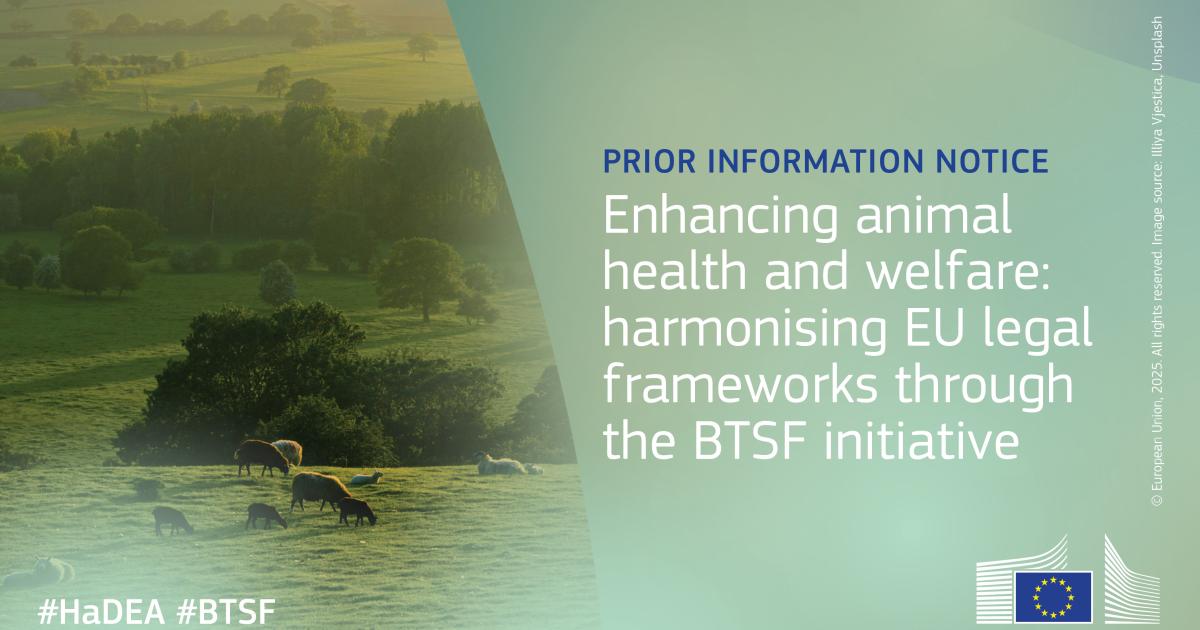Politics
Monetary policy statement

Christine Lagarde, President of the ECB,
Luis de Guindos, Vice-President of the ECB
Frankfurt am Main, 17 April 2025
Good afternoon, the Vice-President and I welcome you to our press conference.
The Governing Council today decided to lower the three key ECB interest rates by 25 basis points. In particular, the decision to lower the deposit facility rate – the rate through which we steer the monetary policy stance – is based on our updated assessment of the inflation outlook, the dynamics of underlying inflation and the strength of monetary policy transmission.
The disinflation process is well on track. Inflation has continued to develop as staff expected, with both headline and core inflation declining in March. Services inflation has also eased markedly over recent months. Most measures of underlying inflation suggest that inflation will settle at around our two per cent medium-term target on a sustained basis. Wage growth is moderating, and profits are partially buffering the impact of still elevated wage growth on inflation. The euro area economy has been building up some resilience against global shocks, but the outlook for growth has deteriorated owing to rising trade tensions. Increased uncertainty is likely to reduce confidence among households and firms, and the adverse and volatile market response to the trade tensions is likely to have a tightening impact on financing conditions. These factors may further weigh on the economic outlook for the euro area.
We are determined to ensure that inflation stabilises sustainably at our two per cent medium-term target. Especially in current conditions of exceptional uncertainty, we will follow a data-dependent and meeting-by-meeting approach to determining the appropriate monetary policy stance. In particular, our interest rate decisions will be based on our assessment of the inflation outlook in light of the incoming economic and financial data, the dynamics of underlying inflation and the strength of monetary policy transmission. We are not pre-committing to a particular rate path.
The decisions taken today are set out in a press release available on our website.
I will now outline in more detail how we see the economy and inflation developing and will then explain our assessment of financial and monetary conditions.
Economic activity
The economic outlook is clouded by exceptional uncertainty. Euro area exporters face new barriers to trade, although their scope remains unclear. Disruptions to international commerce, financial market tensions and geopolitical uncertainty are weighing on business investment. As consumers become more cautious about the future, they may hold back from spending as well.
At the same time, the euro area economy has been building up some resilience against the global shocks. The economy is likely to have grown in the first quarter of the year, and manufacturing has shown signs of stabilisation. Unemployment fell to 6.1 per cent in February, its lowest level since the launch of the euro. A strong labour market, higher real incomes and the impact of our monetary policy should underpin spending. The important policy initiatives that have been launched at the national and EU levels to increase defence spending and infrastructure investment can be expected to bolster manufacturing, which is also reflected in recent surveys.
In the present geopolitical environment, it is even more urgent for fiscal and structural policies to make the euro area economy more productive, competitive and resilient. The European Commission’s Competitiveness Compass provides a concrete roadmap for action, and its proposals, including on simplification, should be swiftly adopted. This includes completing the savings and investment union, following a clear and ambitious timetable, which should help savers benefit from more opportunities to invest and improve firms’ access to finance, especially risk capital. It is also important to rapidly establish the legislative framework to prepare the ground for the potential introduction of a digital euro. Governments should ensure sustainable public finances in line with the EU’s economic governance framework and prioritise essential growth-enhancing structural reforms and strategic investment.
Inflation
Annual inflation edged down to 2.2 per cent in March. Energy prices fell by 1.0 per cent, after a slight rise in February, while food price inflation rose to 2.9 per cent in March, from 2.7 per cent in February. Goods inflation was stable at 0.6 per cent. Services inflation fell again in March, to 3.5 per cent, and it now stands half a percentage point below the rate recorded at the end of last year.
Most indicators of underlying inflation are pointing to a sustained return of inflation to our two per cent medium-term target. Domestic inflation has declined since the end of 2024. Wages are gradually moderating. In the last quarter of 2024 annual growth in compensation per employee stood at 4.1 per cent, down from 4.5 per cent in the previous quarter. Rising productivity also meant that unit labour costs grew more slowly. The ECB’s wage tracker and information from our contacts with companies point to a decline in wage growth in 2025, as also indicated in the March staff projections. Unit profits fell at an annual rate of 1.1 per cent at the end of last year, contributing to lower domestic inflation.
Most measures of longer-term inflation expectations continue to stand at around 2 per cent, which supports the sustainable return of inflation to our target.
Risk assessment
Downside risks to economic growth have increased. The major escalation in global trade tensions and associated uncertainties will likely lower euro area growth by dampening exports, and it may drag down investment and consumption. Deteriorating financial market sentiment could lead to tighter financing conditions, increase risk aversion and make firms and households less willing to invest and consume. Geopolitical tensions, such as Russia’s unjustified war against Ukraine and the tragic conflict in the Middle East, also remain a major source of uncertainty. At the same time, an increase in defence and infrastructure spending would add to growth.
Increasing global trade disruptions are adding more uncertainty to the outlook for euro area inflation. Falling global energy prices and appreciation of the euro could put further downward pressure on inflation. This could be reinforced by lower demand for euro area exports owing to higher tariffs, and a re-routing of exports into the euro area from countries with overcapacity. Adverse financial market reactions to the trade tensions could weigh on domestic demand and thereby also lower inflation. By contrast, a fragmentation of global supply chains could raise inflation by pushing up import prices. A boost in defence and infrastructure spending could also raise inflation over the medium term. Extreme weather events, and the unfolding climate crisis more broadly, could drive up food prices by more than expected.
Financial and monetary conditions
Risk-free interest rates have declined in response to the escalating trade tensions. Equity prices have fallen amid high volatility and corporate bond spreads have widened around the globe. The euro has strengthened over recent weeks as investor sentiment has proven more resilient towards the euro area than towards other economies.
The latest official statistics on corporate borrowing, which predated these market tensions, continued to indicate that our interest rate cuts had made it less expensive for firms to borrow. The average interest rate on new loans to firms declined to 4.1 per cent in February, from 4.3 per cent in January. Firms’ cost of issuing market-based debt declined to 3.5 per cent in February, but there has been some upward pressure more recently. Moreover, growth in lending to firms picked up again in February, to 2.2 per cent, while debt securities issuance by firms grew at an unchanged rate of 3.2 per cent.
At the same time, credit standards for business loans tightened slightly again in the first quarter of 2025, as reported in our latest bank lending survey for the euro area. As in the previous quarter, this was mainly because banks are becoming more concerned about the economic risks faced by their customers. Demand for loans to firms decreased slightly in the first quarter, after a modest recovery in previous quarters.
The average rate on new mortgages, at 3.3 per cent in February, increased on the back of earlier rises in longer-term market rates. Mortgage lending continued to strengthen in February, albeit at a still subdued annual rate of 1.5 per cent, as banks eased their credit standards and demand for loans to households continued to increase strongly.
Conclusion
The Governing Council today decided to lower the three key ECB interest rates by 25 basis points. In particular, the decision to lower the deposit facility rate – the rate through which we steer the monetary policy stance – is based on our updated assessment of the inflation outlook, the dynamics of underlying inflation and the strength of monetary policy transmission. We are determined to ensure that inflation stabilises sustainably at our two per cent medium-term target. Especially in current conditions of exceptional uncertainty, we will follow a data-dependent and meeting-by-meeting approach to determining the appropriate monetary policy stance. In particular, our interest rate decisions will be based on our assessment of the inflation outlook in light of the incoming economic and financial data, the dynamics of underlying inflation and the strength of monetary policy transmission. We are not pre-committing to a particular rate path.
In any case, we stand ready to adjust all of our instruments within our mandate to ensure that inflation stabilises sustainably at our medium-term target and to preserve the smooth functioning of monetary policy transmission.
We are now ready to take your questions.
Politics
The EBA updates list of indicators used to perform risk assessments


© FRVS+MPCP 2022. The European Times® News is registered as an EU Trademark. All rights reserved. The European Times® and the logo of The European Times® are EU trademarks registered by FRVS+MPCP.
Members/Partners of

About Us
Popular Category
DISCLAIMER OPINIONS: The opinions of the authors or reproduced in the articles are the ones of those stating them and it is their own responsibility. Should you find any incorrections you can always contact the newsdesk to seek a correction or right of replay.
DISCLAIMER TRANSLATIONS: All articles in this site are published in English. The translated versions are done through an automated process known as neural translations. If in doubt, always refer to the original article. Thank you for understanding.
DISCLAIMER PHOTOS: We mostly used photos images that are readily available online, from free sources, or from the people promoting the news. If by any chance it happens that we have used one of your copyrighted photos, please do not hesitate to contact us and we will take it down without question. We do not make profits as this is a not for profit project to give voice to the voiceless while giving them a platform to be informed also of general news, and it is completely free.
Editor Picks
Politics
Monetary policy decisions

17 April 2025
The Governing Council today decided to lower the three key ECB interest rates by 25 basis points. In particular, the decision to lower the deposit facility rate – the rate through which the Governing Council steers the monetary policy stance – is based on its updated assessment of the inflation outlook, the dynamics of underlying inflation and the strength of monetary policy transmission.
The disinflation process is well on track. Inflation has continued to develop as staff expected, with both headline and core inflation declining in March. Services inflation has also eased markedly over recent months. Most measures of underlying inflation suggest that inflation will settle at around the Governing Council’s 2% medium-term target on a sustained basis. Wage growth is moderating, and profits are partially buffering the impact of still elevated wage growth on inflation. The euro area economy has been building up some resilience against global shocks, but the outlook for growth has deteriorated owing to rising trade tensions. Increased uncertainty is likely to reduce confidence among households and firms, and the adverse and volatile market response to the trade tensions is likely to have a tightening impact on financing conditions. These factors may further weigh on the economic outlook for the euro area.
The Governing Council is determined to ensure that inflation stabilises sustainably at its 2% medium-term target. Especially in current conditions of exceptional uncertainty, it will follow a data-dependent and meeting-by-meeting approach to determining the appropriate monetary policy stance. In particular, the Governing Council’s interest rate decisions will be based on its assessment of the inflation outlook in light of the incoming economic and financial data, the dynamics of underlying inflation and the strength of monetary policy transmission. The Governing Council is not pre-committing to a particular rate path.
Key ECB interest rates
The Governing Council today decided to lower the three key ECB interest rates by 25 basis points. Accordingly, the interest rates on the deposit facility, the main refinancing operations and the marginal lending facility will be decreased to 2.25%, 2.40% and 2.65% respectively, with effect from 23 April 2025.
Asset purchase programme (APP) and pandemic emergency purchase programme (PEPP)
The APP and PEPP portfolios are declining at a measured and predictable pace, as the Eurosystem no longer reinvests the principal payments from maturing securities.
***
The Governing Council stands ready to adjust all of its instruments within its mandate to ensure that inflation stabilises sustainably at its 2% target over the medium term and to preserve the smooth functioning of monetary policy transmission. Moreover, the Transmission Protection Instrument is available to counter unwarranted, disorderly market dynamics that pose a serious threat to the transmission of monetary policy across all euro area countries, thus allowing the Governing Council to more effectively deliver on its price stability mandate.
The President of the ECB will comment on the considerations underlying these decisions at a press conference starting at 14:45 CET today.
Source link
Politics
Prior Information Notice – Enhancing Animal Health and Welfare: Harmonising EU Legal Frameworks through the BTSF Initiative



DISCLAIMER: Information and opinions reproduced in the articles are the ones of those stating them and it is their own responsibility. Publication in The European Times does not automatically means endorsement of the view, but the right to express it.
DISCLAIMER TRANSLATIONS: All articles in this site are published in English. The translated versions are done through an automated process known as neural translations. If in doubt, always refer to the original article. Thank you for understanding.

– Advertisement –
– Advertisement –
HaDEA has published the Prior Information Notice HADEA/2025/OP/0012-PIN – Enhancing Animal Health and Welfare in EU Member States and Candidate Countries: Harmonising EU Legal Frameworks through the ‘Better Training for Safer Food’ Initiative.
The subject of this call for tenders is the organisation and implementation of training activities on Animal Health and Animal Welfare Law under the “Better Training for Safer Food” initiative. The execution of the tasks will be divided in two separate phases of 30 months each. The main objectives of this call for tenders are:
- Protecting the EU from animal diseases
- Harmonising EU legislation
- Promoting sustainable food systems
- Supporting DG SANTE priorities and enhancing global recognition of EU standards
The main beneficiaries will be EU Member States and Candidate Countries, with some non-EU countries (EU Neighborhood countries), which will be also covered based on European Commission strategic objectives.
Estimated budget: €3 900 000
Interested parties are invited to check the Funding and Tenders Portal for the upcoming publication of the call for tenders.
Background
Better Training for Safer Food (BTSF) is a European Commission training initiative to improve the knowledge and implementation of EU rules covering food safety, plant, animal, and One Health.
The basic training principles involve the delivery of information, knowledge sharing and networking, and using the train-the-trainer approach to disseminate the knowledge attained. Training delivery may be through face-to-face courses, virtual classrooms or eLearning.
Source link
More from the author
– EXCLUSIVE CONTENT –
-

 EU & the World6 days ago
EU & the World6 days agoHow Old Are the Menendez Brothers in 2025? Lyle and Erik’s Ages Today
-

 EU & the World7 days ago
EU & the World7 days agoWhere to Stream Coachella 2025: How to Watch the Show
-

 EU & the World6 days ago
EU & the World6 days agoCelebrities Going to Space: Katy Perry & More in the Blue Origin Crew
-

 Sports6 days ago
Sports6 days agoDavid Massey: “A historic edition for the Rolex Monte Carlo Masters.”
-

 EU & the World6 days ago
EU & the World6 days agoHow Did Kyren Lacy Die? Updates on the LSU Player’s Death
-

 Sports5 days ago
Sports5 days agoLuka Modric looks to the future: enters as minority owner of Swansea
-

 EU & the World4 days ago
EU & the World4 days agoSedona Prince Allegations: Why She Wasn’t Selected in WNBA Draft
-

 Sports2 days ago
Sports2 days agoEdison Callejas dominates the third stage of the Giro d'Abruzzo








